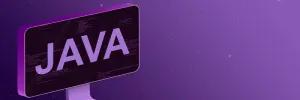In Java, handling input and output operations is a critical part of application development, whether you're dealing with file manipulation, network communication, or working with raw data. Java provides a rich set of APIs under the java.io package to support these I/O operations.
Among them, streams form the backbone of Java I/O. Streams in Java are broadly categorized into Byte Streams and Character Streams, each designed for specific data types and use-cases.
This blog takes a deep dive into Byte Streams—what they are, how they differ from Character Streams, when to use them, and why they are essential.
Level up your Java skills with upGrad’s comprehensive software engineering course designed for future tech leaders.
Introduction to Byte Stream and Character Stream
Before jumping into the specifics, it's crucial to understand the distinction between the two core types of streams in Java programming language:
- Byte Streams handle raw binary data. They are useful for reading and writing binary files like images, audio, and video.
- Character Streams handle textual data and automatically encode and decode characters based on the character set.
Both streams follow a hierarchical class structure and follow a similar I/O model using abstract classes and concrete implementations.
Also read: CharAT() in Java
What Is Byte Stream in Java?
Byte Stream in Java is used for performing input and output of 8-bit bytes. It is designed to handle all types of binary data such as PDFs, images, executables, and audio files. Byte Streams are built upon two abstract classes:
- InputStream – for reading byte data
- OutputStream – for writing byte data
These abstract classes are extended by many concrete classes like FileInputStream, FileOutputStream, BufferedInputStream, and DataOutputStream.
Step into the future of tech with these top-rated software engineering courses:
Why Byte Stream?
Byte Streams are crucial in Java for handling raw binary data. They operate at the lowest level of data processing—directly reading and writing bytes—without applying any character encoding or data transformation.
This makes them ideal for working with non-textual data such as images, audio files, video files, and other multimedia content, where maintaining the original byte structure is essential.
Byte Streams do not perform any form of data conversion. This lack of interpretation ensures that what you write to or read from a stream is exactly what is stored or transmitted, byte for byte. As a result, Byte Streams offer greater precision and control, especially when you need to process files or network communications that require strict format adherence.
In essence, Byte Streams are the go-to choice when dealing with binary data where even a slight alteration due to encoding could lead to corruption or misinterpretation of the data.
Must read: Char array to string in java
An Example of Byte Stream
To illustrate the usage of byte streams, let's consider an example that reads bytes from a file using FileInputStream:
import java.io.FileInputStream;
import java.io.IOException;
public class ByteStreamExample {
public static void main(String[] args) {
try (FileInputStream stream = new FileInputStream("data.bin")) {
int data;
while ((data = stream.read()) != -1) {
System.out.print(data + " ");
}
} catch (IOException e) {
e.printStackTrace();
}
}
}
Output:
72 101 108 108 111 32 87 111 114 108 100
Explanation:
The main method prints output without calling a function or giving parameters in the code example. Java programs start with the main method. The JVM automatically calls the `main` method when you launch a Java program.
The `main` method starts execution in the code sample. It takes an array of `String` arguments (`args`), but this example does not use it.
A `FileInputStream` reads from "data.bin" in the `main` method. A while loop reads each file byte using the stream.read() function. The loop ends when `read` returns -1.
System.out.print(data + "") outputs each byte to the console. This outputs without calling a function or supplying arguments. The `main` method immediately calls the `System.out` `print` method to print each byte read from the file.
Also check: Scanner Class in Java
What Is Character Stream in Java?
Character Stream in Java is used for input and output of 16-bit Unicode characters. These streams are designed specifically for handling text data. They are built on two abstract classes:
- Reader – for reading characters
- Writer – for writing characters
Examples include FileReader, FileWriter, BufferedReader, and PrintWriter.
Character Streams automatically handle the encoding and decoding of characters based on the underlying platform’s character set, typically UTF-8 or UTF-16.
Must check: Map in Java
Example of Character Stream
To showcase the usage of character streams, let's consider an example that reads characters from a file using FileReader:
import java.io.FileInputStream;
import java.io.IOException;
public class ByteStreamExample {
public static void main(String[] args) {
try (FileInputStream stream = new FileInputStream("data.bin")) {
int data;
while ((data = stream.read()) != -1) {
System.out.print(data + " ");
}
} catch (IOException e) {
e.printStackTrace();
}
}
}
Output:
This is the content of the input file.
Explanation:
In the given code snippet, the `main` method is where the execution of the program starts. It takes an array of `String` arguments (`args`) as a parameter, but it is not used in this example.
Within the `main` method, a `FileReader` is created to read from the file named "input.txt".
The `reader.read()` method is then used within a while loop to read each character from the file. The loop continues until the `read` method returns -1, indicating the end of the file.
The `System.out.print((char) character)` statement is responsible for printing each character to the console. The `(char)` cast is used to convert the integer value to its corresponding character representation before printing. This allows the output to be displayed as readable text.
Must read: Loop in Java
Difference Between Byte Stream and Java Stream
Feature | Byte Stream | Character Stream |
Data Type | 8-bit bytes | 16-bit Unicode characters |
Base Classes | InputStream, OutputStream | Reader, Writer |
Used For | Binary data (images, videos, etc.) | Textual data (documents, emails) |
Encoding Handling | Manual (if needed) | Automatic (based on charset) |
Examples | FileInputStream, BufferedInputStream | FileReader, BufferedReader |
When to Use Byte Stream Over Character Stream?
Byte Streams are the right choice when:
- You're working with binary files like images, PDFs, or executable files.
- You need to process raw data without any interpretation or conversion.
- You want more control over how each byte is processed or transferred.
When to Use Character Stream Over Byte Stream?
Character Streams should be used when:
- You're dealing with text files (.txt, .csv, .xml).
- You want Java to handle the character encoding and decoding.
- You are reading or writing character data in a platform-independent way.
Using a Byte Stream for character data may result in corrupted output if the encoding is not handled correctly.
Concluding Words
Understanding the difference between Byte Stream and Character Stream is vital for building robust Java applications. Byte Streams are your go-to when dealing with binary data, ensuring byte-for-byte accuracy without any conversion.
Character Streams, on the other hand, offer a powerful mechanism for handling textual data with automatic character encoding support.
Choosing the right type of stream depends on the nature of your data. Use Character Streams for text and Byte Streams for everything else—especially binary files. Mastering both enables you to build more efficient, accurate, and platform-independent Java applications.
Whether you are reading configuration files, processing user-uploaded images, or parsing large text documents, Java’s I/O API equips you with the right tools for the job.
FAQs
1. What is a Byte Stream in Java?
A Byte Stream in Java is a mechanism used to read and write raw binary data in 8-bit chunks. It is suitable for handling non-textual content such as images, audio files, video files, and any other form of binary data. Byte Streams do not perform any character encoding or decoding, making them ideal for applications where data integrity at the byte level is crucial.
2. How is Byte Stream different from Character Stream?
Byte Streams deal with 8-bit binary data, while Character Streams handle 16-bit Unicode characters. The key difference lies in how data is interpreted—Byte Streams are meant for raw bytes, whereas Character Streams are designed for textual content and handle encoding and decoding automatically. This means Byte Streams are better for binary files, and Character Streams are better suited for readable text files.
3. What are some common classes used in Byte Stream?
Java provides several built-in classes to work with Byte Streams under the java.io package. FileInputStream and FileOutputStream are commonly used to read from and write to files in binary format. For improved performance, you can also use BufferedInputStream and BufferedOutputStream, which buffer input and output operations to reduce I/O overhead.
4. When should I use a Byte Stream instead of a Character Stream?
You should use a Byte Stream when working with binary data like images, audio, executables, or any non-text file. Byte Streams ensure that the data is processed byte-for-byte without any modification or interpretation, preserving the original file format. This is especially important when encoding or decoding is not desirable or could potentially corrupt the data.
5. Can I use Byte Streams for text files?
Yes, you can technically use Byte Streams for text files, but it is not advisable in most cases. Byte Streams do not handle character encoding, which means you must manually convert the bytes to characters using the correct charset. If encoding is not managed correctly, it may result in garbled or unreadable text output.
6. Do Byte Streams handle Unicode characters?
No, Byte Streams do not handle Unicode or any character encoding by default. They simply read and write raw bytes, which means any character-based interpretation must be done manually using encoding and decoding techniques. If you need automatic handling of Unicode characters, Character Streams are a better option.
7. What happens if I use Character Stream for binary data?
Using a Character Stream to read or write binary data is not recommended and may lead to file corruption. Character Streams interpret data as characters and may inadvertently alter the byte sequence during encoding or decoding. This behavior can make binary files like images or videos unusable after processing.
8. Are Byte Streams platform-independent?
Yes, Byte Streams are platform-independent because they deal strictly with raw bytes and do not rely on the operating system’s default character set. This makes them reliable for transferring binary data across different environments without worrying about encoding compatibility. However, any manual encoding or decoding logic added on top must also be consistent across platforms.
9. Which is better for performance: Byte Stream or Character Stream?
Performance depends largely on the type of data being processed. Byte Streams can be more efficient for large files and binary data because they work at the byte level and avoid overhead from encoding or decoding. Character Streams, on the other hand, are optimized for text data and automatically manage character encoding, making them more convenient but slightly heavier in terms of processing.
10. Is it necessary to close Byte Streams?
Yes, it is crucial to close Byte Streams after use to release system resources such as file handles and memory buffers. Failing to close a stream can lead to memory leaks or locked files, especially in long-running applications. Java provides the try-with-resources statement to help developers close streams automatically and safely.
11. Can I buffer Byte Streams for better performance?
Absolutely. Wrapping Byte Streams in buffered classes like BufferedInputStream and BufferedOutputStream significantly improves performance by reducing the number of direct disk or network access operations. Buffering allows data to be read and written in larger chunks, which minimizes latency and increases I/O throughput.
Take the Free Quiz on Java
Answer quick questions and assess your Java knowledge



-7f4b4f34e09d42bfa73b58f4a230cffa.webp&w=128&q=75)
-7f4b4f34e09d42bfa73b58f4a230cffa.webp&w=128&q=75)


























-ae8d039bbd2a41318308f8d26b52ac8f.svg)

-9cd0a42cab014b9e8d6d4c4ba3f27ab1.webp&w=3840&q=75)





